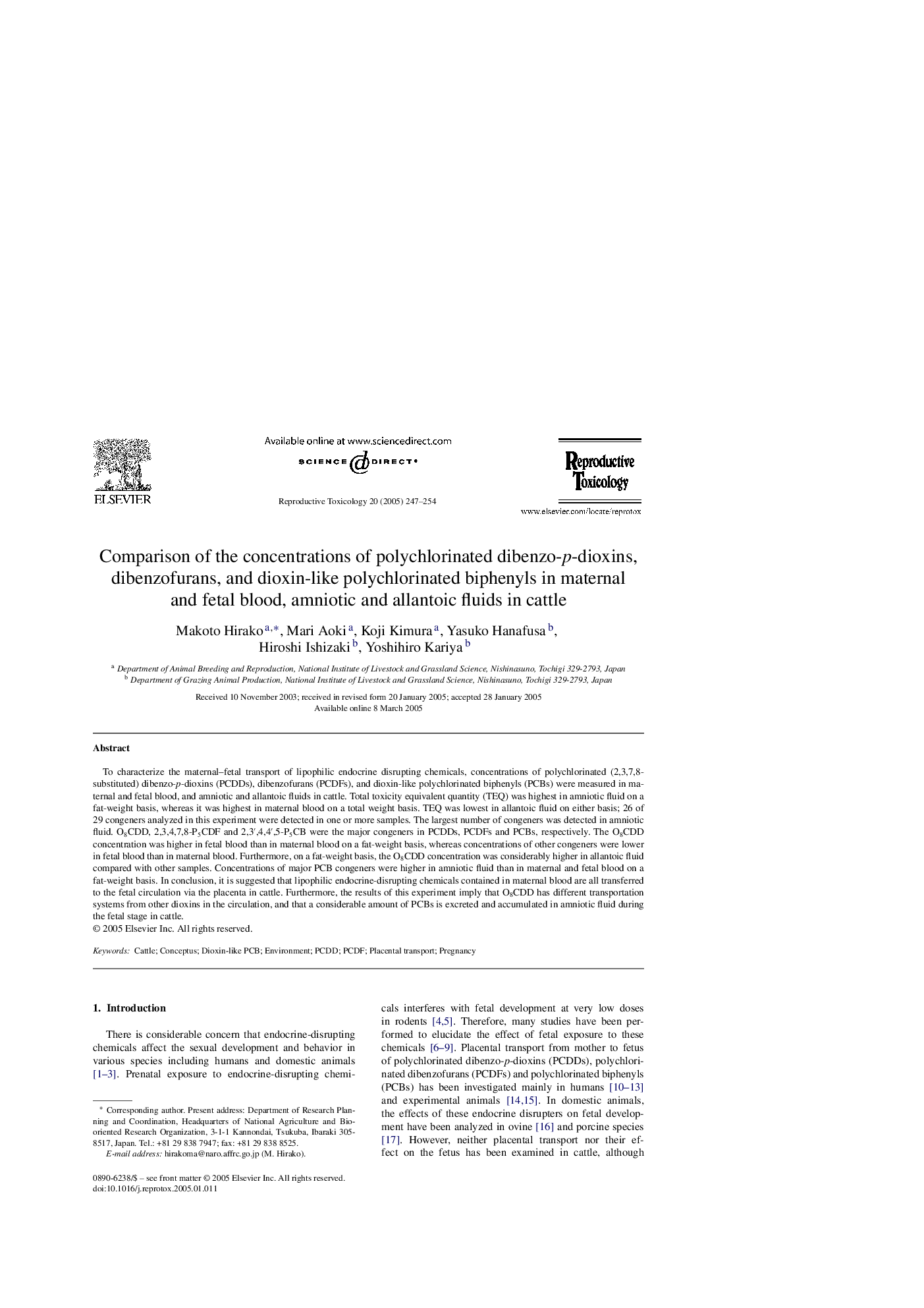| Article ID | Journal | Published Year | Pages | File Type |
|---|---|---|---|---|
| 9034148 | Reproductive Toxicology | 2005 | 8 Pages |
Abstract
To characterize the maternal-fetal transport of lipophilic endocrine disrupting chemicals, concentrations of polychlorinated (2,3,7,8-substituted) dibenzo-p-dioxins (PCDDs), dibenzofurans (PCDFs), and dioxin-like polychlorinated biphenyls (PCBs) were measured in maternal and fetal blood, and amniotic and allantoic fluids in cattle. Total toxicity equivalent quantity (TEQ) was highest in amniotic fluid on a fat-weight basis, whereas it was highest in maternal blood on a total weight basis. TEQ was lowest in allantoic fluid on either basis; 26 of 29 congeners analyzed in this experiment were detected in one or more samples. The largest number of congeners was detected in amniotic fluid. O8CDD, 2,3,4,7,8-P5CDF and 2,3â²,4,4â²,5-P5CB were the major congeners in PCDDs, PCDFs and PCBs, respectively. The O8CDD concentration was higher in fetal blood than in maternal blood on a fat-weight basis, whereas concentrations of other congeners were lower in fetal blood than in maternal blood. Furthermore, on a fat-weight basis, the O8CDD concentration was considerably higher in allantoic fluid compared with other samples. Concentrations of major PCB congeners were higher in amniotic fluid than in maternal and fetal blood on a fat-weight basis. In conclusion, it is suggested that lipophilic endocrine-disrupting chemicals contained in maternal blood are all transferred to the fetal circulation via the placenta in cattle. Furthermore, the results of this experiment imply that O8CDD has different transportation systems from other dioxins in the circulation, and that a considerable amount of PCBs is excreted and accumulated in amniotic fluid during the fetal stage in cattle.
Related Topics
Life Sciences
Environmental Science
Health, Toxicology and Mutagenesis
Authors
Makoto Hirako, Mari Aoki, Koji Kimura, Yasuko Hanafusa, Hiroshi Ishizaki, Yoshihiro Kariya,
